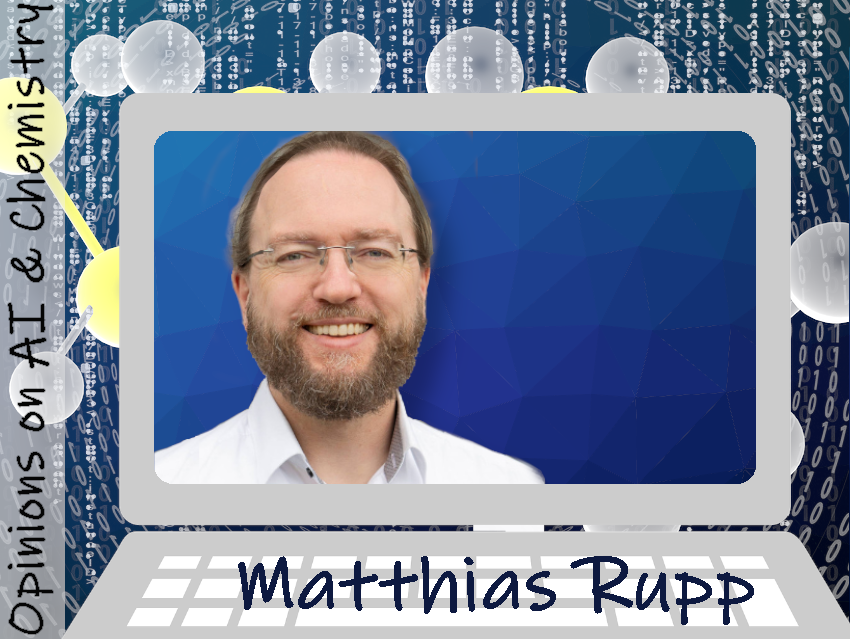The intersection of chemistry and artificial intelligence (AI) is a fascinating area that attracts a lot of attention in both research and industry. We talked to people working in the field about the potential of AI to revolutionize chemical research, but also about concerns, (current) limitations, and ethical implications for chemical applications. We also asked for ideas to try or experiment with, as well as useful articles and videos for beginners and advanced users.
Dr. Matthias Rupp, Luxembourg Institute of Science and Technology (LIST), works in the field of machine learning for physics, chemistry, and materials science.
What fascinates you about AI?
When I started my Ph.D., I was fascinated by the mathematical elegance of kernel-based machine learning, a class of systematically-nonlinear data-driven algorithms based on kernels. These are positive definite functions that efficiently compute the inner product (correlation) between data points projected nonlinearly into a high-dimensional space, where the original problem becomes (more) linear.
Later, I was driven by the possibilities in physics, chemistry, and materials science offered by data-driven methods and the applications we tried to achieve with them. I want to know how much chemistry and physics we can push these methods to do, what their limitations were, and how we can improve them by including domain knowledge.
Is there anything we should fear?
Like other technologies, AI can be misused for fraud, surveillance, manipulation of public opinion through fake images and videos, and warfare. AI also has the potential to improve productivity in professional settings and the quality of people’s daily lives.
However, AI’s disruptive potential does not seem larger to me than, say, the one of biotechnology and genetic engineering. Ultimately, these are tools, and society has to decide how they are used. Despite recent press releases to the contrary, I also do not expect artificial general intelligence to be created in the near future.
Do you have something for our readers to try out or experiment with?
Given the low entry bar, I recommend playing with currently available AI technology, including general models such as ChatGPT or Bard and more specialized products such as Elicit, and many others. Doing so, for example, by asking questions about a topic that you are an expert on, quickly reveals the limitations of current large language models but also provides an outlook of what might be to come.
With the rapid pace of development and initiatives such as, for example, Future House (a philanthropically funded moonshot focused on building an AI scientist), large language models might become practically highly useful scientific tools, e.g., to search, summarize, and structure large bodies of scientific literature and perhaps derive scientific hypotheses from them.
Is there anything else you would like to share with readers of ChemistryViews?
Besides large language models, there are many data-driven developments in physics, chemistry, and materials science. One example is self-driving/autonomous laboratories, pursued by, among others, the Acceleration Consortium, which aims to accelerate the discovery of materials and molecules via AI and automation.
Machine-learning inter-atomic potentials, an area I am active in, have matured sufficiently to enable practical molecular dynamics simulations of large atomistic systems at near ab initio accuracy, enabling studies that would otherwise not be possible. However, the development of these methods started decades ago—perhaps a reminder of the time scale of scientific developments.
Thank you very much for the insights.
All views are his own, and do not necessarily represent those of LIST.
back to overview “Opinions on AI & Chemistry”


